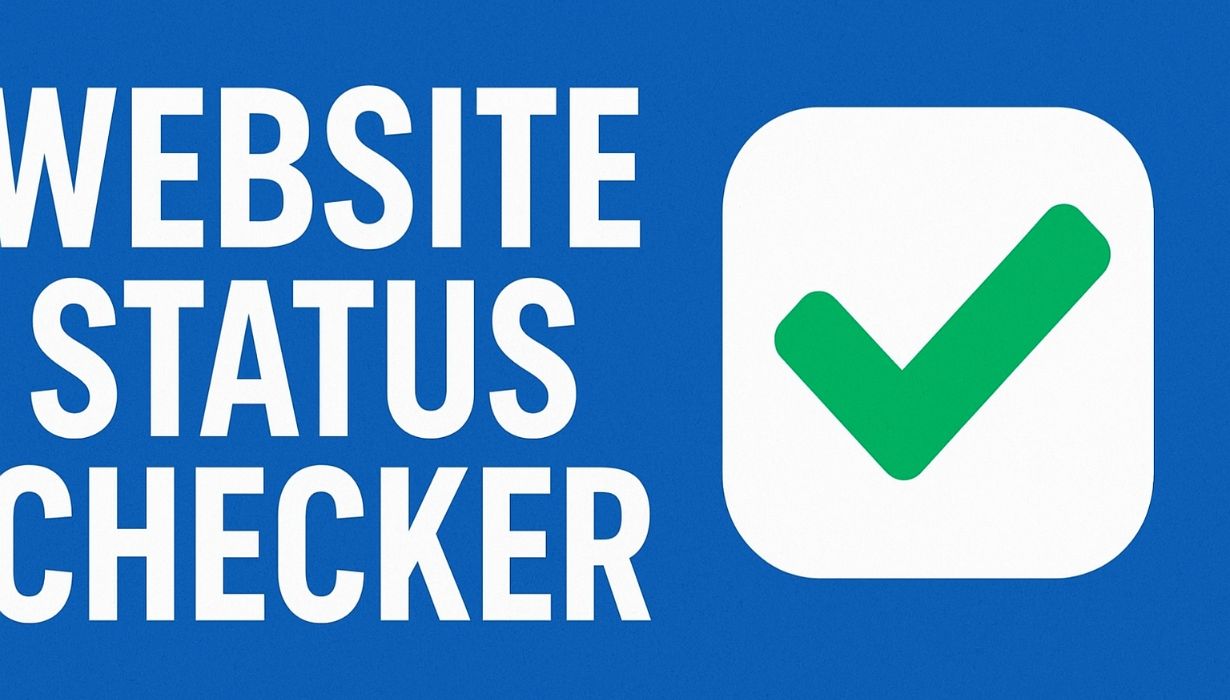
25
Easy Life Tools
A Website Status Checker is an essential tool that helps you instantly verify if a website is online offline or facing errors It checks server response uptime and performance giving clear results in seconds For business owners developers and everyday users this tool saves time protects trust and prevents revenue loss by detecting downtime early By monitoring websites regularly tracking response times and using global checks you can ensure your site stays reliable and accessible
Looking AhWebsite Status Checker – Ensure Your Website is Always Online
In the digital age, a website is like the front door of any business blog, or service Whether you run an online shop provide tools or share content, your website must be accessible at all times. But what happens when your site suddenly stops working? Visitors leave, opportunities are lost and your reputation may be affected This is where a Website Status Checker becomes essential
A Website Status Checker is a tool that allows you to quickly find out if a site is working properly or experiencing downtime For business owners developers and everyday users, this tool is not just convenient—it is vita In this article, we will explore what a Website Status Checker is, how it works, why it matters, and how you can use it effectively to monitor your online presence
What Is a Website Status Checker
A Website Status Checker is an online utility that helps you test whether a website is live and accessible to users. It instantly reports if the site is online, offline, slow, or facing errors. Instead of manually guessing why a site won’t load, this tool gives clear information in seconds
For example
If your favorite blog does not open, a status checker tells you whether the issue is with the website itself or your internet connection
If you manage a website, you can use it to confirm if your hosting server is responding
In short, it provides clarity and saves time
How Does a Website Status Checker Work
A Website Status Checker works by sending a request to the website’s server. This request is like knocking on the door to see if anyone answers The server then responds, and the tool displays the result
The tool generally checks
HTTP Status Code – It looks at the response code such as 200 (OK), 404 (Page Not Found), or 500 (Server Error
Response Time – How quickly the server replies
Server Location – Some tools also display where the server is located
Global Status – Advanced checkers test the site from different regions worldwide to confirm whether the problem is local or global
This data helps website owners understand performance issues and gives users confidence in the site’s reliability
Why Website Uptime Matters
For any website owner, uptime is directly linked to trust and revenue. Imagine running an e-commerce store—if your site is down for even an hour, you may lose sales and customers A Website Status Checker helps reduce this risk by providing instant alerts when something goes wrong
Here’s why uptime is so important
User Trust: Visitors expect websites to load without delay
Revenue Impact: Every minute of downtime can mean lost income
SEO Rankings: Search engines value websites that are stable and reliable
Professional Image: A working website shows credibility
Without regular checks, you may not even know your website is down until users complain. By then, damage may already be done
Common Website Issues Detected by Status Checkers
A Website Status Checker doesn’t just say “up” or “down.” It often highlights the type of problem. Some common issues include
Server Downtime: When the hosting server is not responding
DNS Errors: Issues with domain name resolution
Slow Loading: High response times caused by overloaded servers
Blocked Access: Some sites may be blocked in specific regions
SSL Errors: Problems with website security certificates
Knowing the exact problem helps in faster troubleshooting
Who Needs a Website Status Checker
A Website Status Checker is useful for different types of users
Website Owners: To make sure their site is always online
Developers: To test websites during maintenance or updates
Marketers: To avoid running ads when the landing page is down
Everyday Users: To check if a favorite site is temporarily unavailable
It’s a universal tool because website availability impacts everyone
Benefits of Using a Website Status Checker
Saves Time: Quickly tells you if the problem is with the website or your internet
Improves Reliability: Helps owners monitor uptime and performanc
Boosts User Experience: Visitors enjoy smooth and consistent access
Protects Revenue: Businesses avoid costly downtime losses
Easy to Use: No technical skills are required—just enter the URL and press check
For free online tools like Easy Life Tools, such checkers are an essential part of helping users stay informed
Best Practices for Monitoring Website Status
Using a Website Status Checker is simple but following best practices ensures better results
Check Regularly Don’t wait for problems to appear—monitor your site often
Test Globally Make sure your site works across different regions
Track Response Times: Fast loading means happier visitors
Set Alerts: Some advanced checkers notify you instantly when downtime occurs
Combine with Other Tools: Use along with DNS checkers and uptime monitors for complete protection
Conclusion
A Website Status Checker is more than just a diagnostic tool—it is a safeguard for your online presence Whether you run a small blog a corporate site or an e-commerce store ensuring your website is online is critical for success With instant reports accurate results and global checks these tools save time, protect trus and support business growt
At Easy Life Tools, we provide free utilities like Website Status Checker to help users stay in control. Instead of guessing why a site won’t load, you can get real answers in seconds
Stay connected, stay online, and make your digital presence stronger with the help of Website Status Checker tools
Contact
Missing something?
Feel free to request missing tools or give some feedback using our contact form.
Contact Us